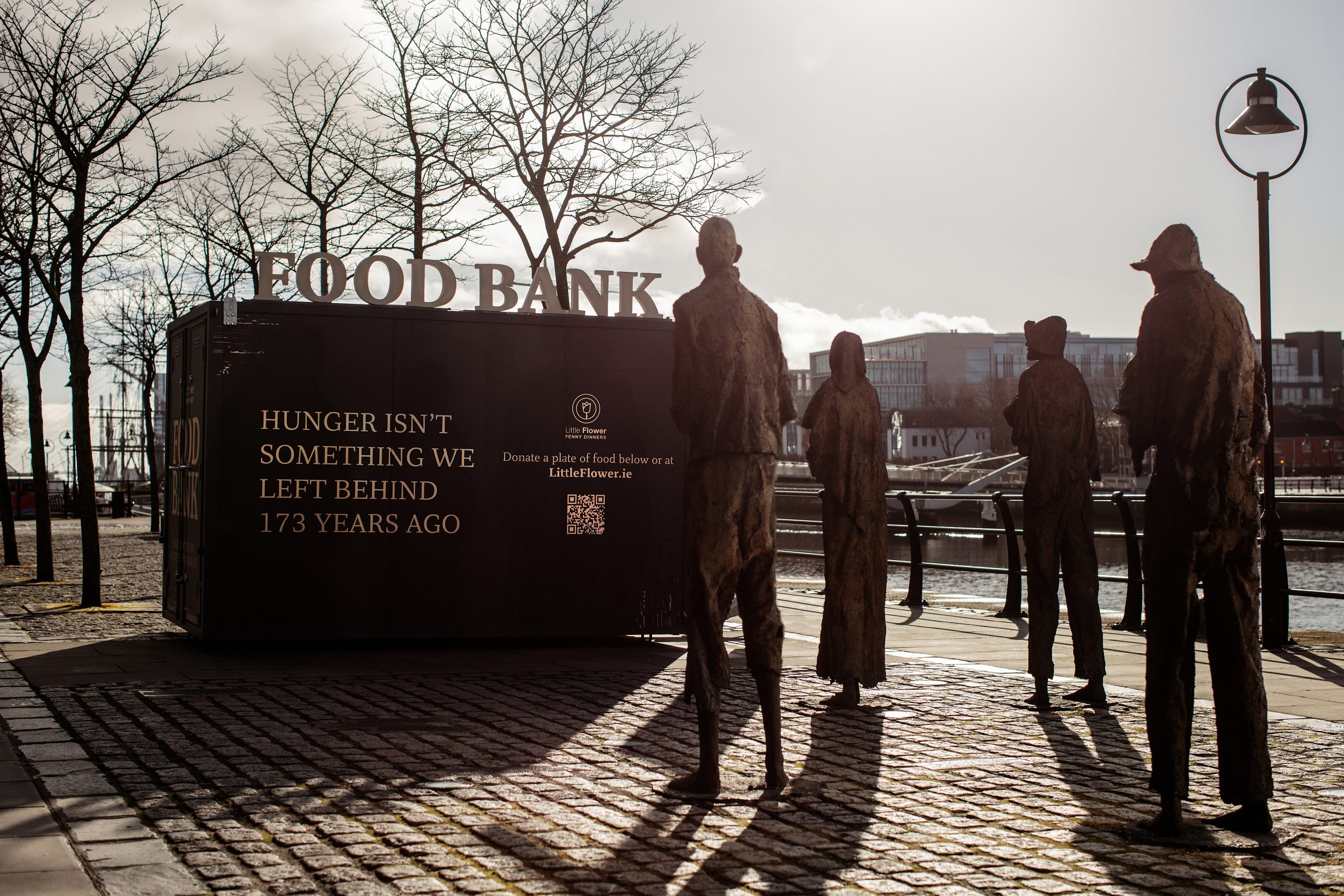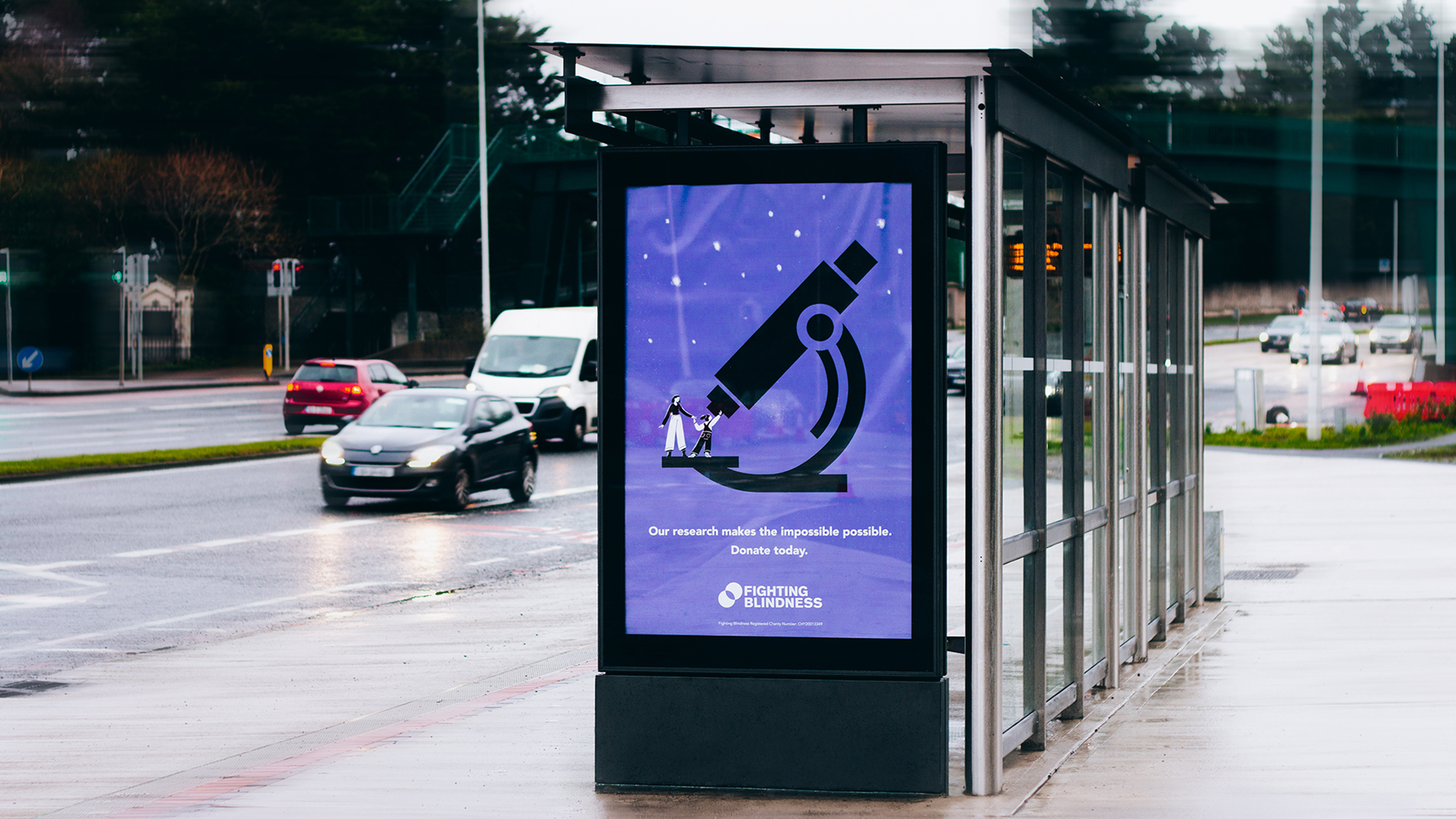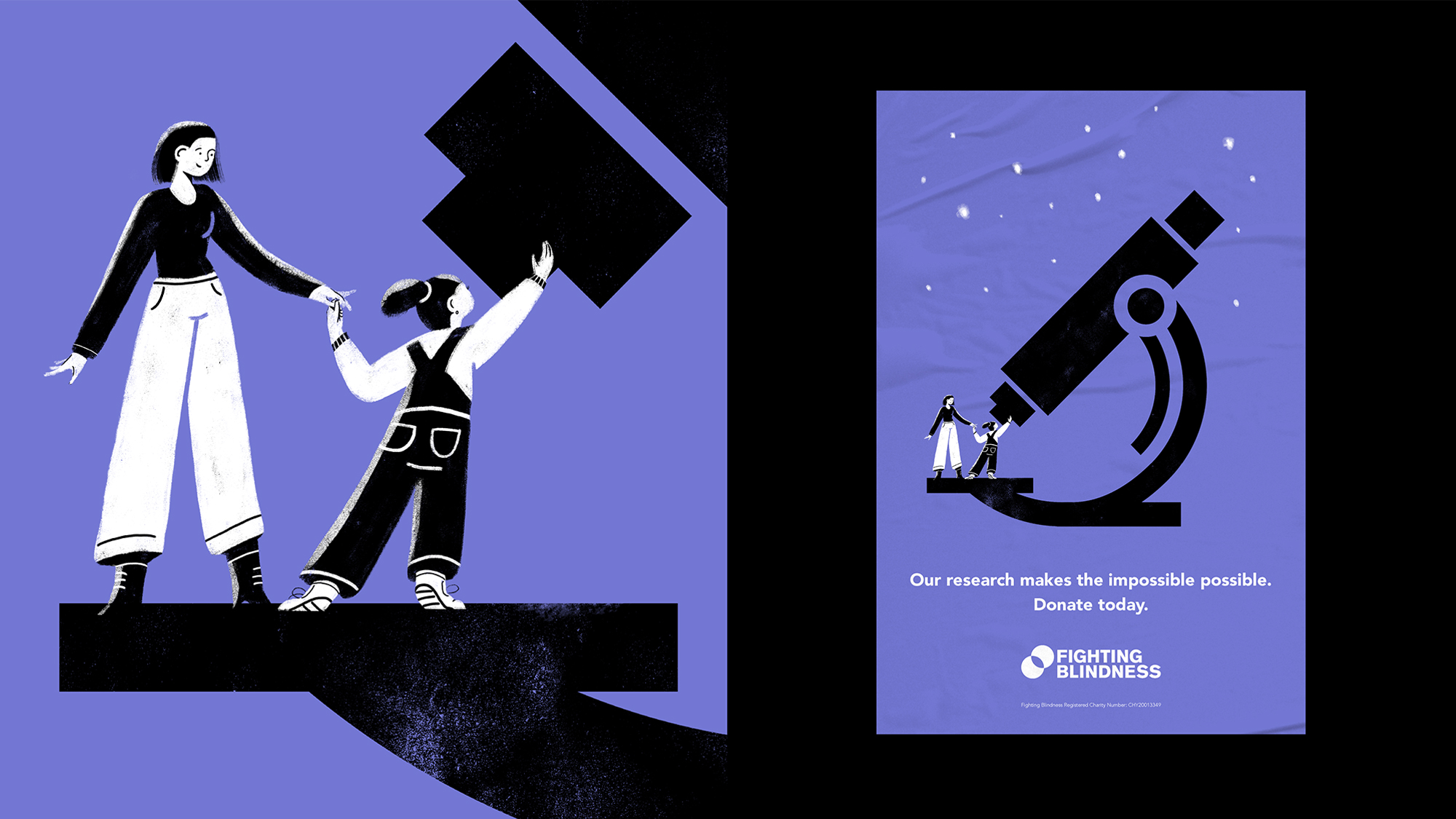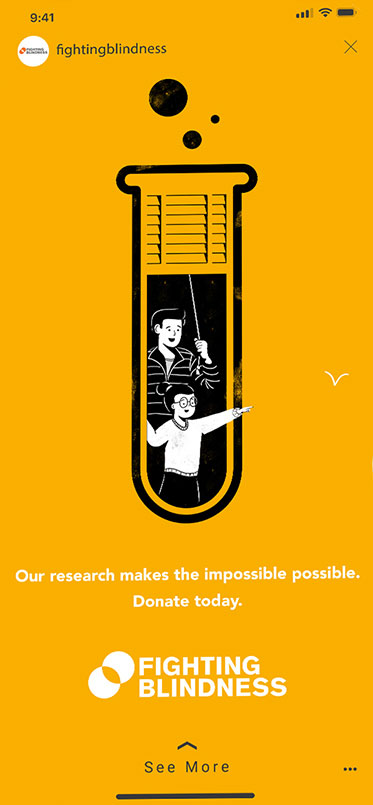Using empty toy boxes to highlight the struggle many families living below the poverty line face.

2020. The most difficult year for charities. With traditional donation sources obliterated by the lockdown, it was vital that SVP connect the donor and the recipient in a motivating way for its annual Christmas appeal.
So in December, we opened ‘The Empty Toy Shop.’ A pop-up shop filled with thousands of toy boxes. Each one of them empty, to represent a child who would be left empty-handed on Christmas morning.
Strategically located on Henry Street, one of Dublin’s busiest shopping streets, our goal was to engage Christmas shoppers at the moment they were buying presents for their loved ones. For every box bought in the shop, a donation would directly go towards a toy for a child in need.
Our empty boxes, which another agency client Smurfit Kappa volunteered to produce, were also placed in the windows of SVP charity shops across the country, with messaging reminding customers that every donation was a direct intervention.


Read the full case study
THE MISSION
Despite the notion that hunger was something that Ireland left behind back in the 1800’s, food poverty is still a huge, yet almost hidden problem in modern-day Ireland. Over 100,000 children go to bed hungry every night, 20% of parents skip meals to feed their families and the demand for food help increased by 70% in 2020.
The solution
To highlight Ireland’s rampant food poverty, a food bank was installed in front of the most powerful symbol of hunger in Irish history, the famous Famine Memorial. Situated in Dublin City Docklands, the haunting Famine statues commemorate the most profound disaster in Irish history, when more than one million people died and a million more emigrated.
The hard-hitting installation, which invited people to donate to Little Flower via a QR code, provides a stark reminder that even though it’s been 173 years since the Irish Famine, hunger is still a huge, ever-growing issue.
THE IMPACT
+388% donations
+258% donors (94% new donors)
+20% new charity volunteers.
173 years later and Ireland is still hungry. ‘Famine Food Bank’ installation puts a spotlight on food poverty in Ireland.

The Mission
Despite the notion that hunger was something that Ireland left behind back in the 1800’s, food poverty is still a huge problem in modern-day Ireland.

The Solution
To highlight Ireland’s rampant food poverty, a food bank was installed in front of the most powerful symbol of hunger in Irish history, the famous Famine Memorial.


The impact
+388% donations
+258% donors (94% new donors)
+20% new charity volunteers

Fighting Blindness are an Irish-based charity whose vision is to cure blindness, support people with sight loss and empower patients. They wanted to communicate an optimistic and hopeful message, informing the public that their investment in blindness research is working in generating new ways to restore people’s sight.
Using simple conceptual illustrations, we developed a series of playful images that combined scientific icons with scenes illustrating the wonderful benefits that can come out of sight restoration treatment and gene therapy.
Stargazing, visiting an art gallery or simply looking at nature; these simple activities we take for granted can be made possible through funding scientific research.





Read the full case study
THE MISSION
Suicide is a huge problem.
Every 40 seconds someone in the world takes their own life.
It is the largest cause of death for men under 501.
And in Ireland, 4 in 5 people who die by suicide are men.
Discussing problems is not part of Irish culture for many men. We often tragically fail to reach out and ask for help when we need it most. Social isolation as a result of Covid-19 has compounded this.
In 2020, during the pandemic, Movember conducted research on men’s mental health and discovered that 33% of men said they felt more isolated, with nearly 50% of them saying no one has checked to nd out how they are coping. Men’s mental health was suffering, they were hungry for connection, yet didn’t know how to talk about it.
The solution
Many studies have concluded that art can make an important contribution to positive mental health. Its ‘healing power’ lies in its capacity to tell human stories, stir emotions, inspire empathy and navigate complex situations.
So, if art has the power to communicate the things we don’t know how to say, could we use its powerful undertone to empower men to break free from legacy burdens and start discussing their feelings?
Further inspiration from a quote by Eileen Miller, “Art can permeate the very deepest parts of us, where no words exist,” combined with the definition of a ‘conversation piece’ – art whose unusual quality makes it a conversation starter in social settings – led us to our big idea.
In the circumstances, a standard advertising campaign wasn’t going to cut it. What could we lean into to generate a volume of earned media, amplify our message and get it out there? We researched the pulling power of cultural icons to provoke the public’s interest. Some of Ireland’s most influential artists, icons and musicians volunteered to have a conversation about their own experiences of mental health and, working in pairs, created digital outdoor artworks inspired by it.
Getting the public’s attention demanded we launch with something spectacular, something that had never been done before. We launched ‘Conversation Piece’ with ‘Together We Stand’, a massive digital outdoor projection onto the iconic Poolbeg Chimneys, a famous landmark on the skyline of Ireland’s capital.
They were the perfect canvas to launch this simple but supportive message. They have stood together for the last 50 years, even surviving a planned demolition.
The launch was followed by seven collaborations with fourteen highly respected Irish artists and cultural icons that included Sebastian Barry, Vivienne Roche, Gavin Friday, Domino Whisker , Aches, Mund and Tiny Ark.
In a year when everyone was ‘at home’ and OOH collapsed due to lack of footfall, it felt counter-intuitive to develop an ‘out of home’ digital campaign. But the hauntingly empty streets of the City provided the perfect metaphor to display the work. This, combined with the sense of isolation, melancholy, and even hope in each artist’s piece, reflected what many people themselves were also going through.
Short videos featuring powerful music, meaningful lyrics and personal stories from our artists accompanied each piece. Subsequent press interviews gave the artists an opportunity to share their own experiences and encourage others to share theirs. In The Irish Times, Irish Laureate Sebastian Barry referenced his own mental health issues;
“It interests me now [that] it never occurred to me to lift the phone and say, ‘Can you help me?’. [With depression] all the beauties of the world, even drinking coffee with your spouse, are not available to you anymore. The slow replacement of those things can only happen through some form of dialogue, some form of conversation.”
The iconic Samuel Beckett Bridge proved a fitting, final canvas. Set in the very heart of Dublin city, street artist Maser programmed poignant lyrics from Damian Dempsey’s back catalogue and we broadcast them from the network of LED’s installed into the bridge itself. ‘Meet Me At The Bridge’ spanned the river Liffey, joining the two sides of the city. Set against Damian’s stirring music, this was a final metaphor to encourage people to meet half-way, and recognise that a conversation takes two people.
THE IMPACT
33% of men felt more isolated during the pandemic and nearly 50% said no one had asked how they were coping. We wanted to reach 1.625m of them. Although we don’t know exactly how many of these men ‘Conversation Piece’ reached, by delivering a nationwide reach of 4.58m, including targeted reach in social, we should have reached a large proportion of those suffering in these pockets of isolation.
And where others stuck to the more traditional Movember fundraising model, our pivot outperformed every other European market and we managed to double donations, which will help fund vital men’s health initiatives and research for the remainder of the pandemic.
The Mission
Pandemic isolation risked intensifying male suicides in Ireland. Conversations save lives but starting them is the challenge.
The Solution
We shed light on the importance of social connections and conversation by lighting up iconic Dublin landmarks with messages of solidarity.
The series featured collaborations with artists and designers such as Sebastian Barry, Vivienne Roche, Gavin Friday, Maser, Damien Dempsey, Domino Whisker, Aches, Mundy and Tiny Ark.

The impact
The campaign delivered reach of 4.5M, delivering 183,000 engagements, sparking many life-saving conversations and doubling annual donations to €4.9m.
Read the full case study
THE MISSION
Despite the notion that hunger was something that Ireland left behind back in the 1800’s, food poverty is still a huge, yet almost hidden problem in modern-day Ireland. Over 100,000 children go to bed hungry every night, 20% of parents skip meals to feed their families and the demand for food help increased by 70% in 2020.
The solution
To highlight Ireland’s rampant food poverty, a food bank was installed in front of the most powerful symbol of hunger in Irish history, the famous Famine Memorial. Situated in Dublin City Docklands, the haunting Famine statues commemorate the most profound disaster in Irish history, when more than one million people died and a million more emigrated.
The hard-hitting installation, which invited people to donate to Little Flower via a QR code, provides a stark reminder that even though it’s been 173 years since the Irish Famine, hunger is still a huge, ever-growing issue.
THE IMPACT
+388% donations
+258% donors (94% new donors)
+20% new charity volunteers.
The Mission
Reverse the drop in donations and trust and build a sustained new younger donor base for SVP.

The Solution
Show that it takes one small thing to tip a person into or out of poverty.









The impact
Reversed the fortunes of SVP to deliver an increase in donations of +28% in four years.


Read the full case study
The Mission
78% of LGBTQI+ children report feeling unsafe in school. We set out to help make schools a safer place for LGBT children.
THE SOLUTION
Re-invent the ‘Remember the Rainbow’ mnemonic using a message of positivity and inclusivity.
There are seven colours in the rainbow – Red Orange Yellow Green Blue Indigo Violet. To help children remember the colours, old King Richard of York is dug up in schools all around Ireland and the UK with the mnemonic: Richard Of York Gave Battle In Vain. Not a very positive message.
We invented a new one: Respect Others You Grow By Including Variety.
This was a perfect message for BeLonG To Youth Services, whose mission is to create a world where all young people, including LGBQI+ youth, can feel safe and equal without experiencing any discrimination.
We then made a story about it – THE COLOURS WHO DIDN’T WANT TO MIX. A short film story about colours who come together to create one of the most beautiful things in the world – a rainbow.
We launched a website with fun activities and teaching worksheets.
THE IMPACT
Thousands of work lessons have been downloaded and used in schools across Ireland. We know Richard’s battle was in vain, but by being killed again, he may help win the battle for equality and tolerance.
Rest in peace Richard.
The Mission
Most gender diversity messages wait till children are age-appropriate, by which time it is much harder to change biases.

THE SOLUTION
A trojan horse approach – change an age-old class lesson and re-invent a whole new way for school children to remember the colours of the rainbow.



The impact
Listed as an official new teaching resource and adopted in hundreds of schools across the country.
